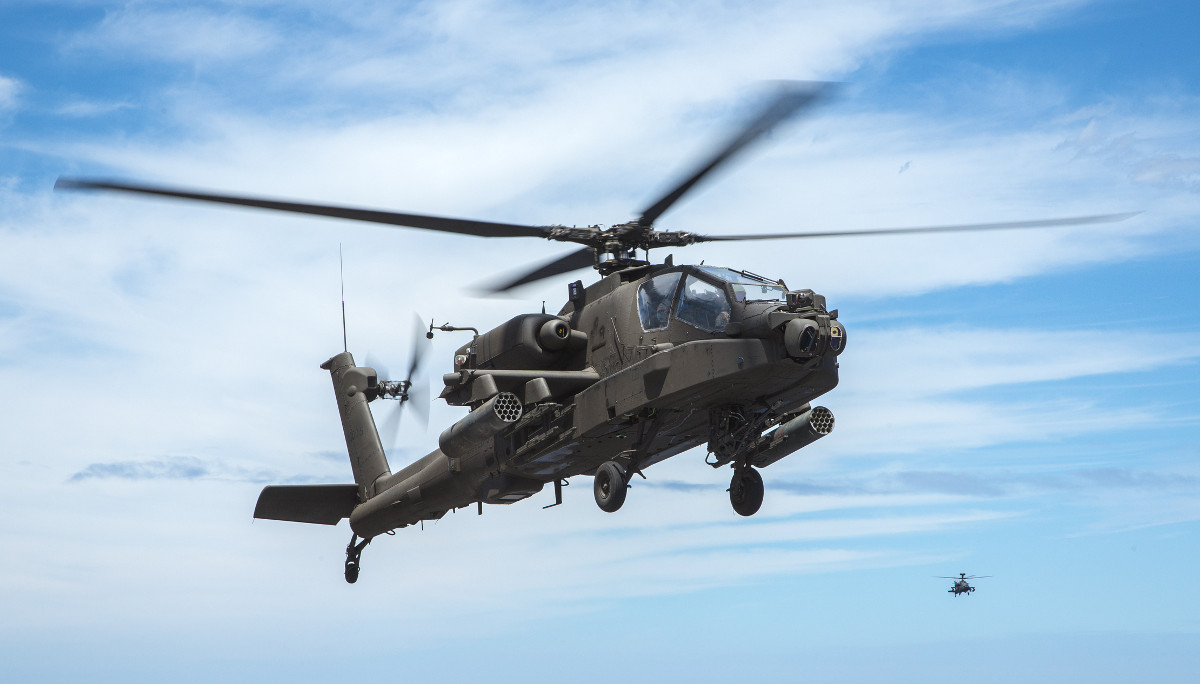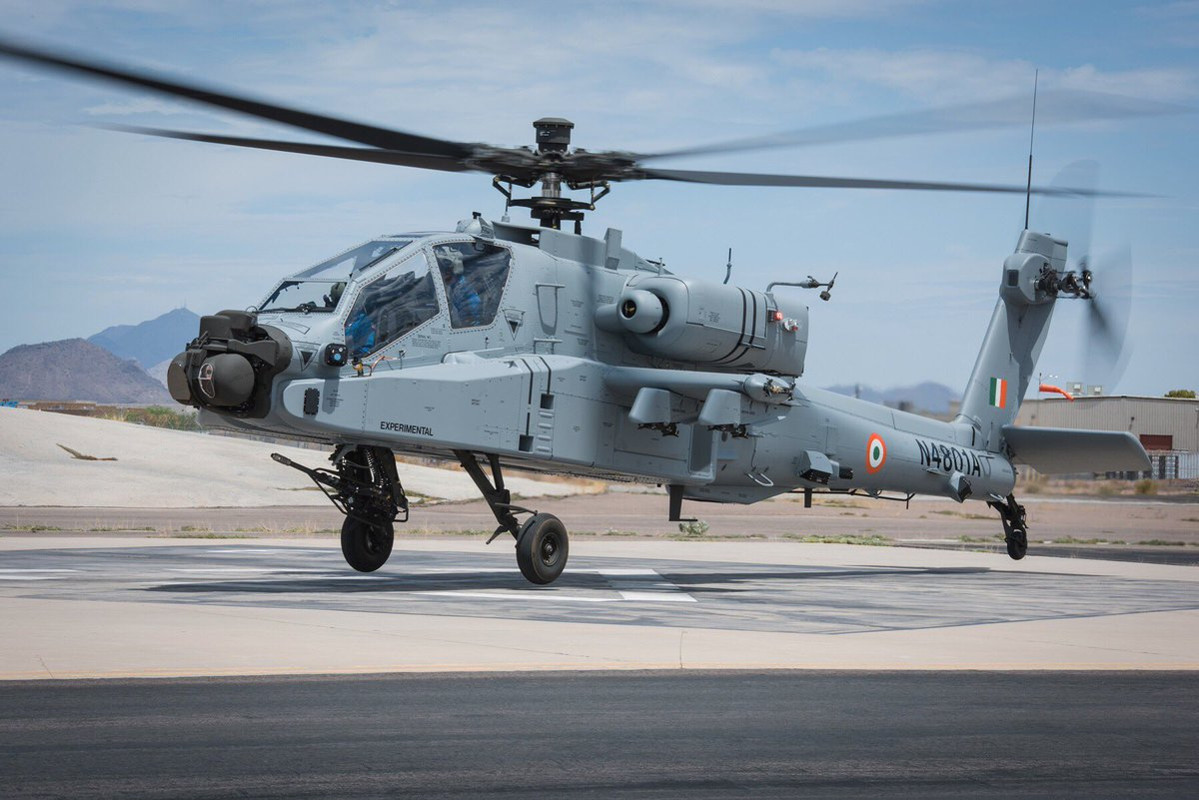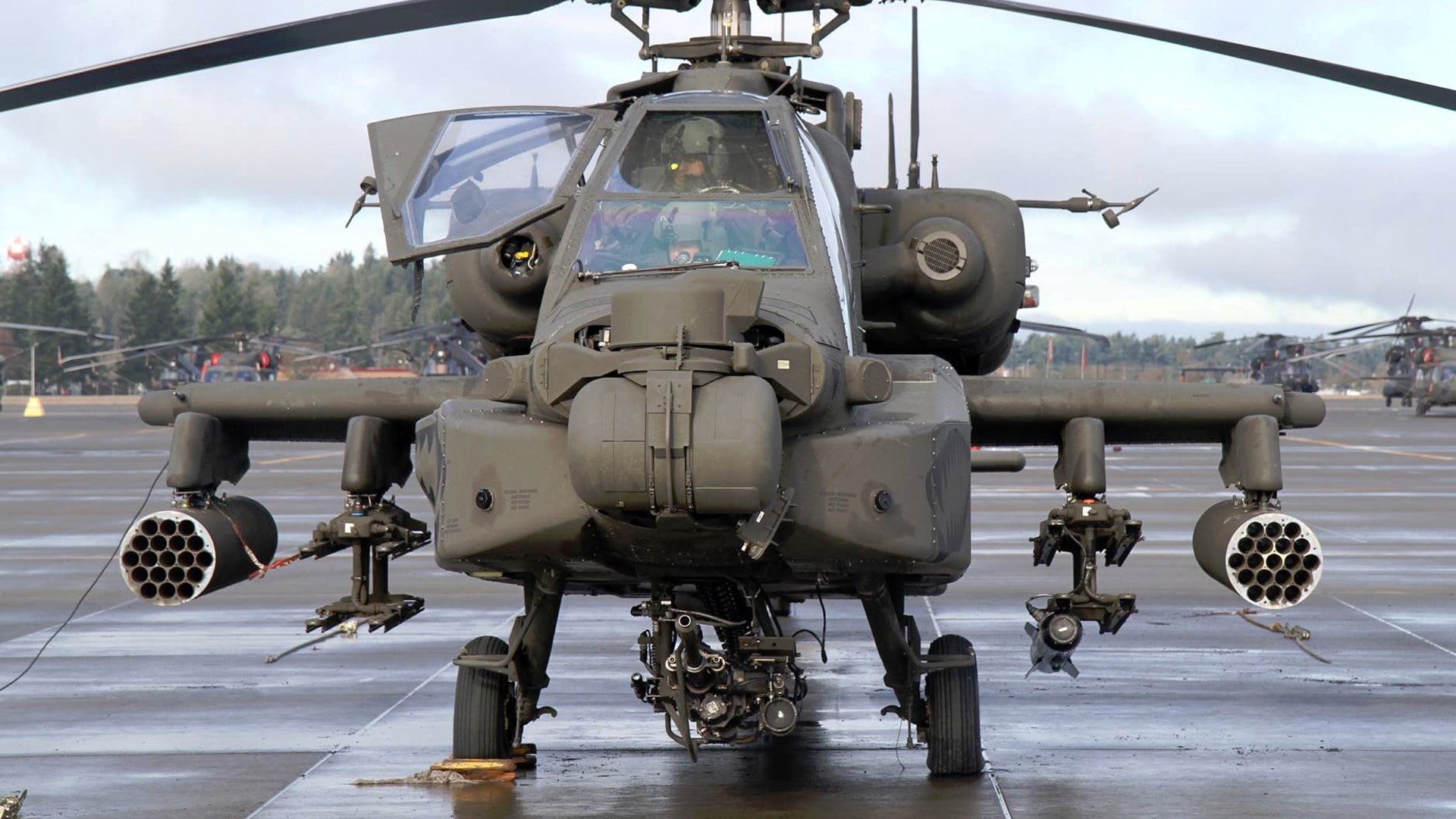Boeing has revealed that it is testing a compound helicopter derivative of its AH-64E Apache Guardian that would be faster, have longer range, and be more fuel efficient than existing gunships. The announcement comes as the Army is exploring the possibility of a new attack and reconnaissance rotorcraft and amid reports that the service may need to dramatically upgrade its existing Apaches to keep them capable and relevant until the armed versions of whatever design wins the Future Vertical Lift competition reach full operational capability.
Jane’s 360 was among the first to report the details about the new helicopter development, which Boeing is presently calling the AH-64E Block 2 Compound. The gunship will feature an enlarged main wing, revised engine exhaust arrangement, large vertical tail fin, and a rear-mounted pusher propeller. The design may also feature a new, rigid rotor system, which is a standard feature on other compound helicopter designs.
Boeing estimates that the revised configuration will give the helicopter 50 percent more speed and range and allow it to be 24 percent more fuel efficient during flight, according to Jane’s. The current AH-64E has a top speed in level flight of more than 170 miles per hour and has a range of around 300 miles.
The Chicago-headquartered planemaker says it has already built a one third scale model of the helicopter, which is presently undergoing wind tunnel tests at the company’s facility in Philadelphia, Pennsylvania. Those experiments are supposed to wrap up in January 2019.
The new development may reuse aspects of an earlier “Advanced Apache” that Boeing first detailed in 2014, which came to be known as either AH-64X or AH-64F. This version would have also been a compound type featuring improved engines, larger wings, retractable landing gear, and a tail rotor that could articulate 90 degrees in order to provide forward thrust during level flight. In 2016, the Army had said it was not interested in this concept.

The most obvious prospective customer for this new Apache derivative would be the U.S. Army, which operates around 235 AH-64E Guardians and more than 500 older AH-64D Longbows. The service is also in the process of both buying more Apache Guardians and upgrading the systems on board those helicopters to make them deadlier over land and water, which you can read about in more detail here.
In June 2018, the service announced plans to select two competing rotorcraft designs for a fly-off, a program known as the Future Attack Reconnaissance Aircraft Competitive Prototype (FARA CP), which could potentially lead to purchases of more than 500 aircraft to perform a range of “armed reconnaissance, light attack, and security” tasks. The Apache already owns what the Army refers to as “attack-reconnaissance” mission set, having taken on increased scout and reconnaissance roles after the retirement of the OH-58D Kiowa Warrior scout helicopter.

The Army has specified few solid requirements for what it is looking for in terms of performance for the new attack and reconnaissance rotorcraft, but has said that it wants them to have a top speed of around 230 miles per hour. If the AH-64E Block 2 Compound does get a 50 percent boost in top speed over the standard Apache Guardian, it could be traveling at more than 250 miles per hour.
An Apache-derived platform would present a lower-risk option when compared to newer, clean-sheet designs such as the Sikorsky S-97 Raider. The compound AH-64 would also have at least some commonality with the Army’s existing Apaches, which would allow the service to make use of existing maintenance and logistics pipelines to some degree, and could make Boeing’s offering even more attractive. This is especially true when it comes to receiving funding from Congress.
At the same time, the Army is looking ahead to acquiring an entire new slate of helicopters to replace all of its existing fleets, including the AH-64s, as part of the Future Vertical Lift (FVL) program. For that competition, Boeing has paired with Sikorsky, now part of Lockheed Martin, to offer the SB>1 Defiant compound coaxial transport helicopter, along with an as yet unnamed gunship derivative, for the FVL-Medium portion of that program. Those helicopters are supposed to begin arriving by the end of the 2020s.

However, the Army is reportedly increasingly of the view that it will need a significantly upgraded Apache to ensure the helicopters are still combat-capable in higher risk environments by the time they reach the end of their service lives. At present, the service hopes to keep the gunships flying through the middle of the century.
“Even using the most aggressive plan they have to replace that fleet [the AH-64s] with something of the Future Vertical Lift family, there will have to be another evolution of some sort to keep the aircraft sustainable, ready and relevant to support the warfighter out to that time frame,” Shane Openshaw, Boeing’s top Apache program official, told Rotor & Wing International magazine on Oct. 24, 2018. “If you look at what kind of capabilities were incorporated as the Apache evolved from an A to a D and the D to an E, we’re going to be thinking along the same lines,” he added.
The compound design shows that Boeing is also pursuing far more ambitious concepts that might appeal to the Army as general replacements for at least a portion of its Apaches, too. It wouldn’t be the first time the service has explored the possibility of adopting a compound helicopter gunship, either.
Famously, or infamously, in the 1960s and 1970s, the Army evaluated Lockheed’s AH-56A Cheyenne, a then-state-of-the-art design that was fast, maneuverable, and heavily armed with a mix of automatic cannons, machine guns and grenade launchers, unguided rockets, and the still relatively new TOW guided anti-tank missile. A combination of mishaps, technical problems, and political machinations, all help conspire to kill the program in 1972.

The Army did almost immediately initiate a new attack helicopter development program, which eventually led to the introduction of the AH-64A in 1986. In the interim, the service settled on a succession of AH-1 Cobra gunship variants, which were less advanced, but were also less complicated and cheaper to operate and maintain than the AH-56A would have been.
In the mid-2000s, the Army also took over testing of a compound derivative of the UH-60 Black Hawk, the Piasecki Aircraft X-49A SpeedHawk, from the U.S. Navy. The AVX Aircraft Company also pitched a compound version of the OH-58D Kiowa Warrior to the Army before it canceled plans for a replacement scout helicopter altogether. AVX is now offering its own compound designs for the FVL program.

If Boeing can sell the Army on a compound version of the Apache, it could put the gunship version of the SB>1 Defiant in an awkward position, offering a more cost-effective helicopter with some of its capabilities that would be available sooner, or even in service already. Depending on how extensive the upgrades are, it might be possible to offer the compound features as an upgrade to existing AH-64s, as well.
If it is possible to convert older AH-64s into compound versions of the Apache, it could offer an attractive way for any of the 15 other operators of the helicopter worldwide to improve their own capabilities. With more than 1,000 Apaches in service around the world, it could be ga lucrative opportunity for Boeing, too.
The improved capabilities the compound design offers could still be a major selling point on their own for any country looking to be new attack helicopters, whether or not they already operate AH-64s. Boeing hopes that the Block 2 Compound derivative will only cost 20 percent more than a new AH-64E. As of 2018, the Army is paying around $33.6 million each for new Apache Guardian it buys, so the new compound version could have a final price tag of a little more than $40 million.

“We have at least 10 more in the pipeline now,” Boeing’s Openshaw told Rotor & Wing on Oct. 24, 2018, referring to the possible number of new foreign Apache customers. “Some are window shoppers. Some are getting serious. They’re justifying the requirement to those who hold the purse strings, those who make decisions to support their respective departments of defense.”
Regardless of who ultimately expresses an interest in buying this compound version of the Apache, we’ll definitely be keeping an eye on how this potentially impressive design continues to evolve. For the Army, it might lead the way for the service to finally adopt a compound attack helicopter more than four decades after the cancellation of the Cheyenne and it could disrupt two major aircraft tenders on the horizon.
Contact the author: jtrevithickpr@gmail.com
